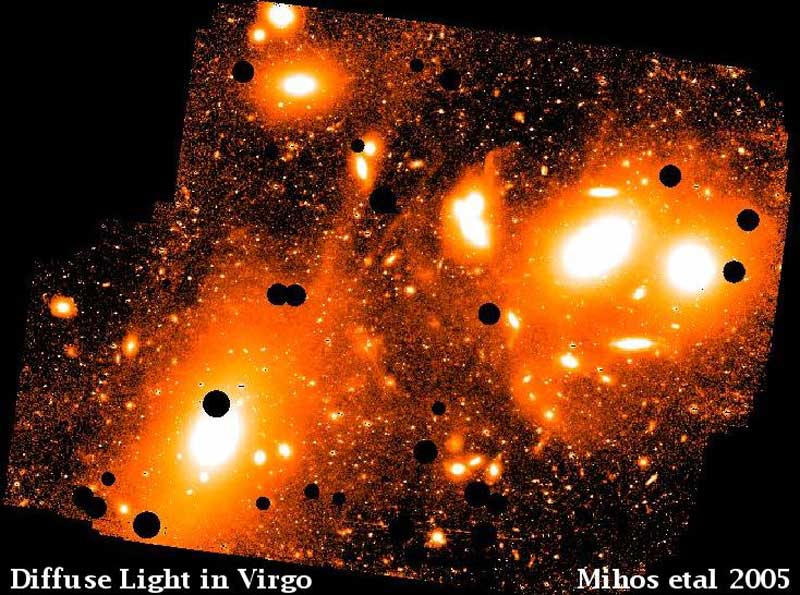Explanation: How do huge clusters of galaxies evolve? To help find out, astronomers pointed the wide-angle Burrell-Schmidt telescope on Kitt Peak National Observatory in Arizona, USA at the nearby Virgo Cluster of Galaxies. After hundreds of 15-minute exposures taken over two months in early 2004, the result is a dramatically deep and wide angle image of Virgo, the closest cluster of galaxies to our Milky Way Galaxy. Bright foreground stars have been digitally removed from the image but are still represented by numerous unusual dark spots. Inspection of the above image shows unusually large halos for the brightest galaxies as well as unusual faint streams of stars connecting Virgo galaxies that previously appeared unrelated. The above image allows a better reconstruction of the past few billion years of the gigantic Virgo cluster and illuminates the dynamics of clusters of galaxies in general.
1999 2000 2001 2002 2003 2004 2005 2006 2007 2008 2009 2010 2011 2012 2013 2014 2015 2016 2017 2018 2019 2020 2021 2022 2023 2024 2025 |
Yanvar' Fevral' Mart Aprel' Mai Iyun' Iyul' Avgust Sentyabr' Oktyabr' Noyabr' Dekabr' |
NASA Web Site Statements, Warnings, and Disclaimers
NASA Official: Jay Norris. Specific rights apply.
A service of: LHEA at NASA / GSFC
& Michigan Tech. U.
|
Publikacii s klyuchevymi slovami:
Virgo Cluster - galaxies - stars - skoplenie galaktik v Deve - zvezdy
Publikacii so slovami: Virgo Cluster - galaxies - stars - skoplenie galaktik v Deve - zvezdy | |
Sm. takzhe:
Vse publikacii na tu zhe temu >> | |
